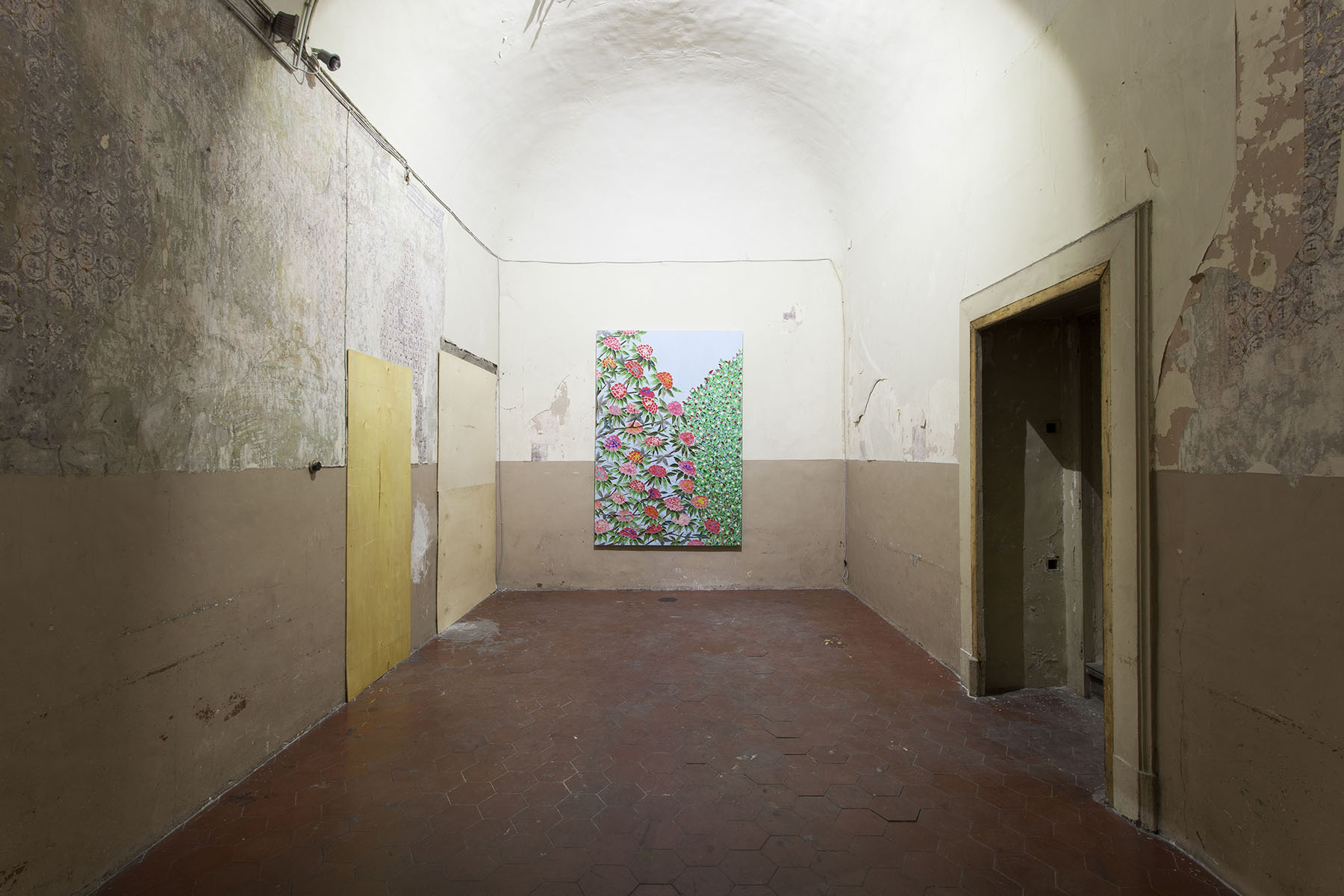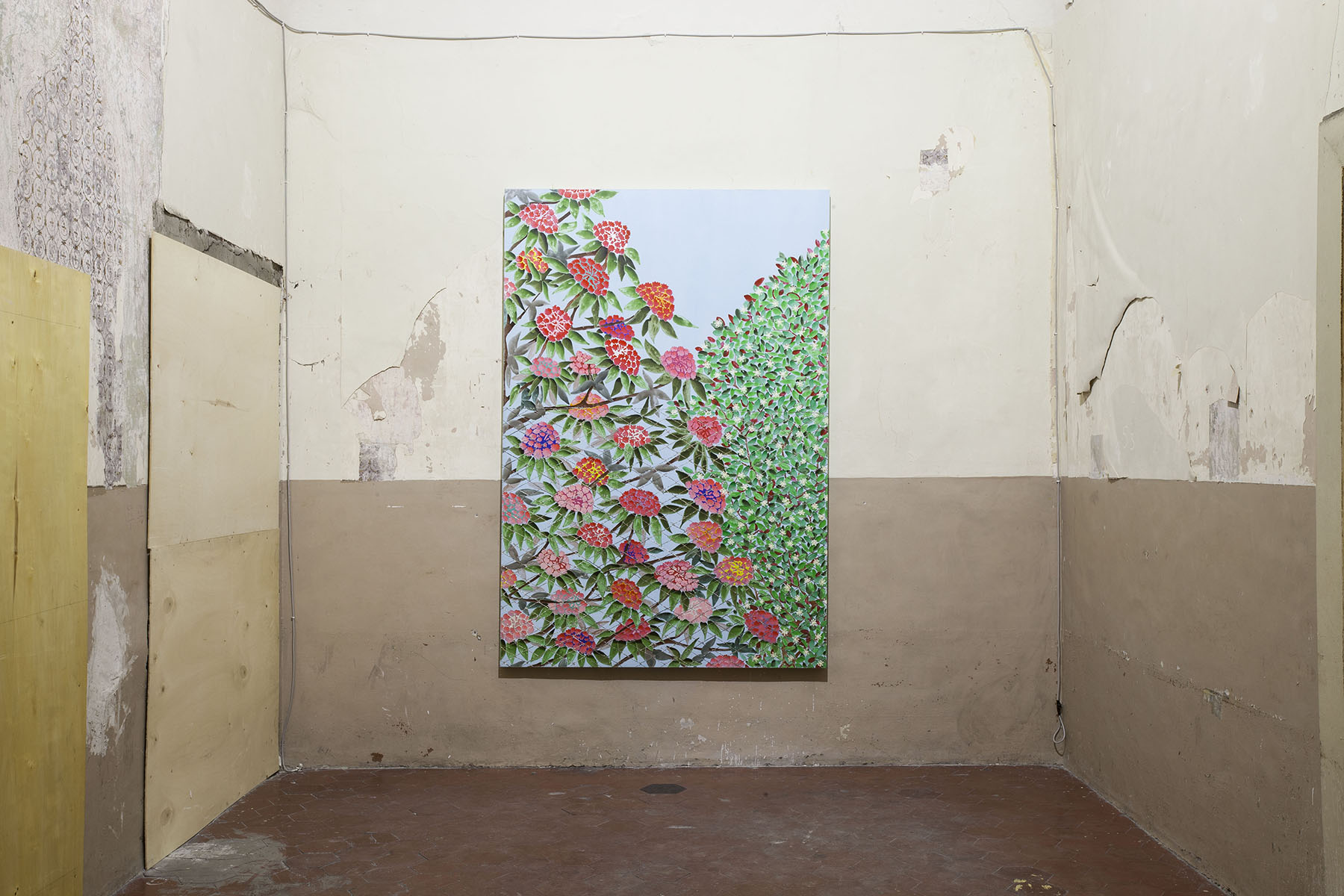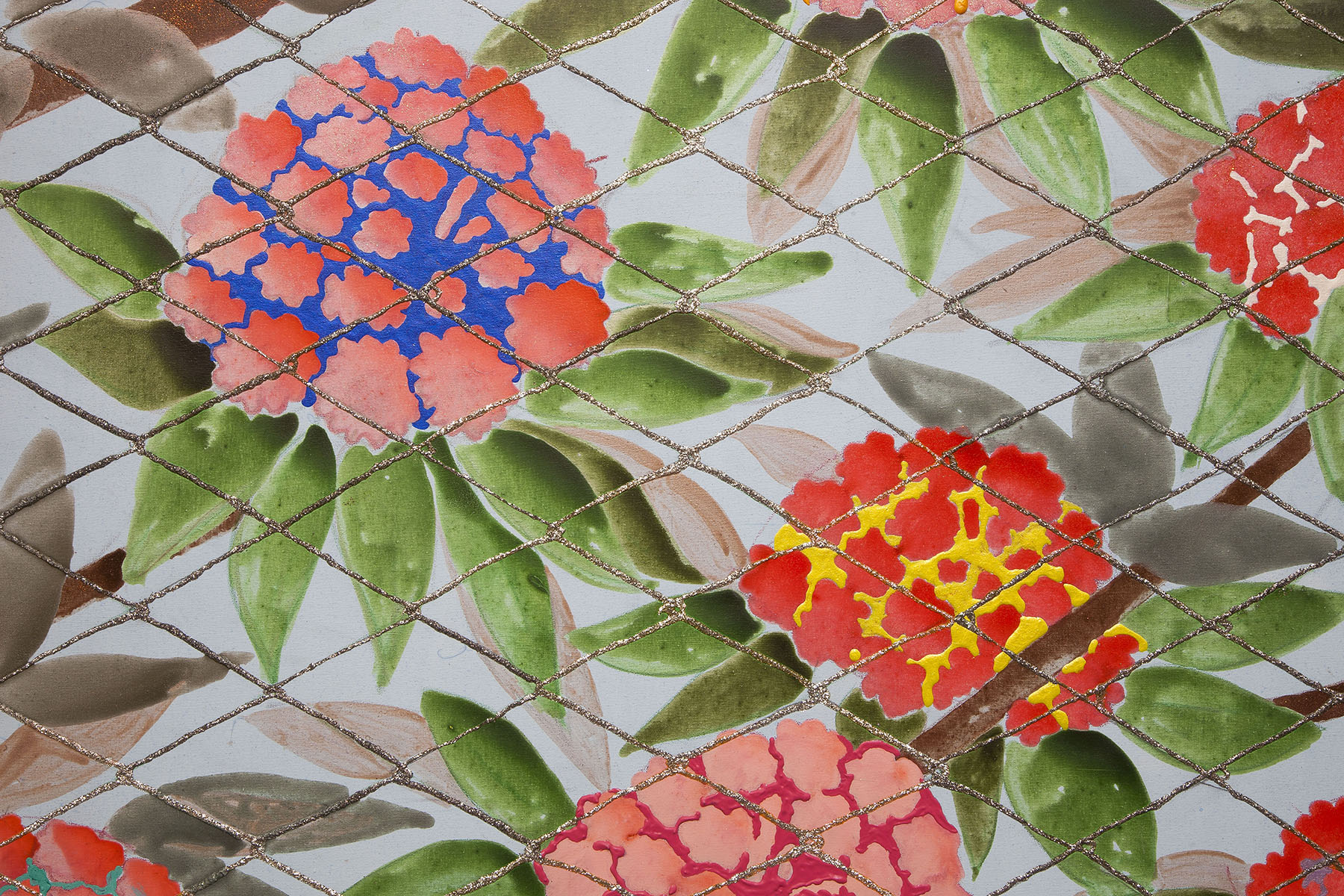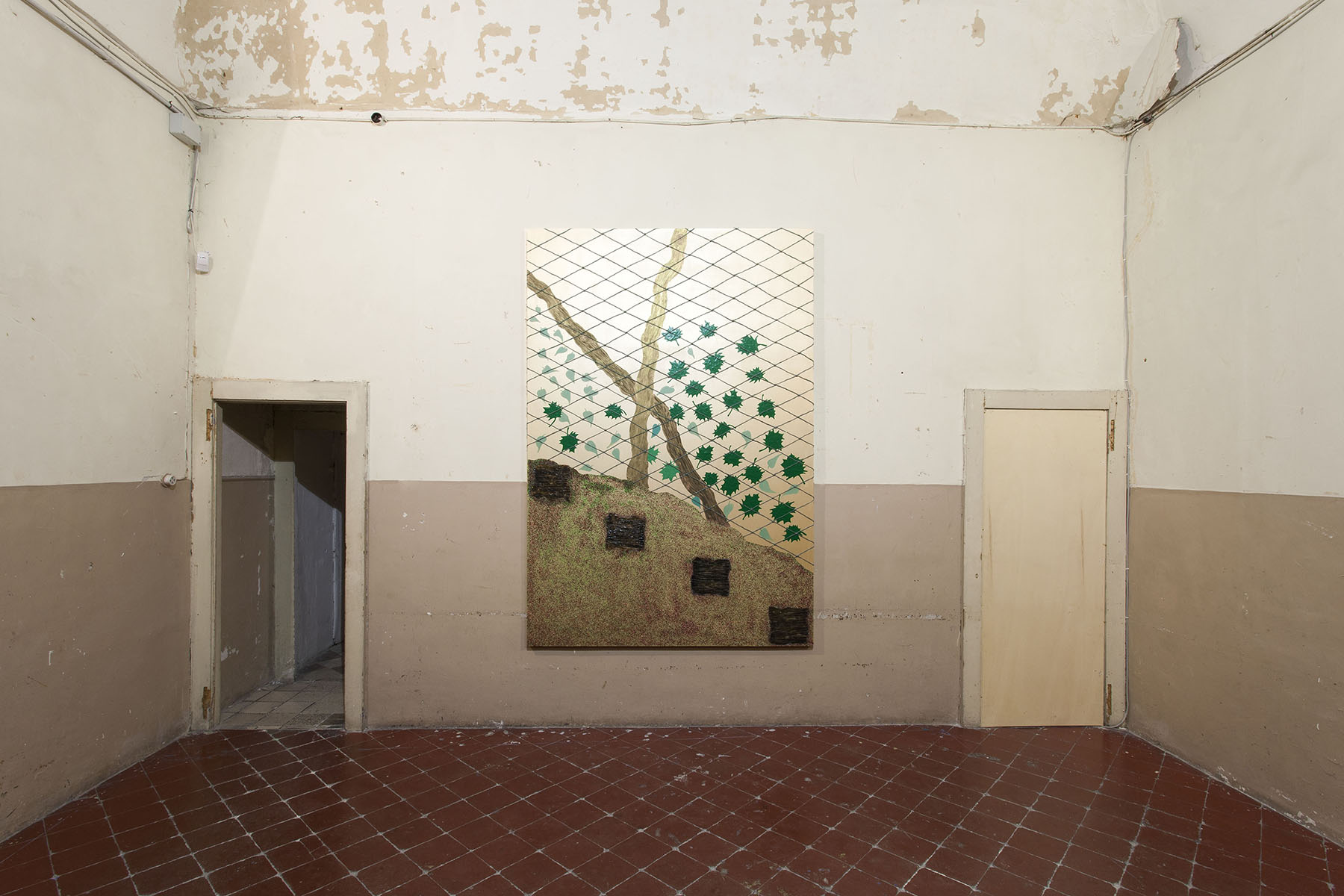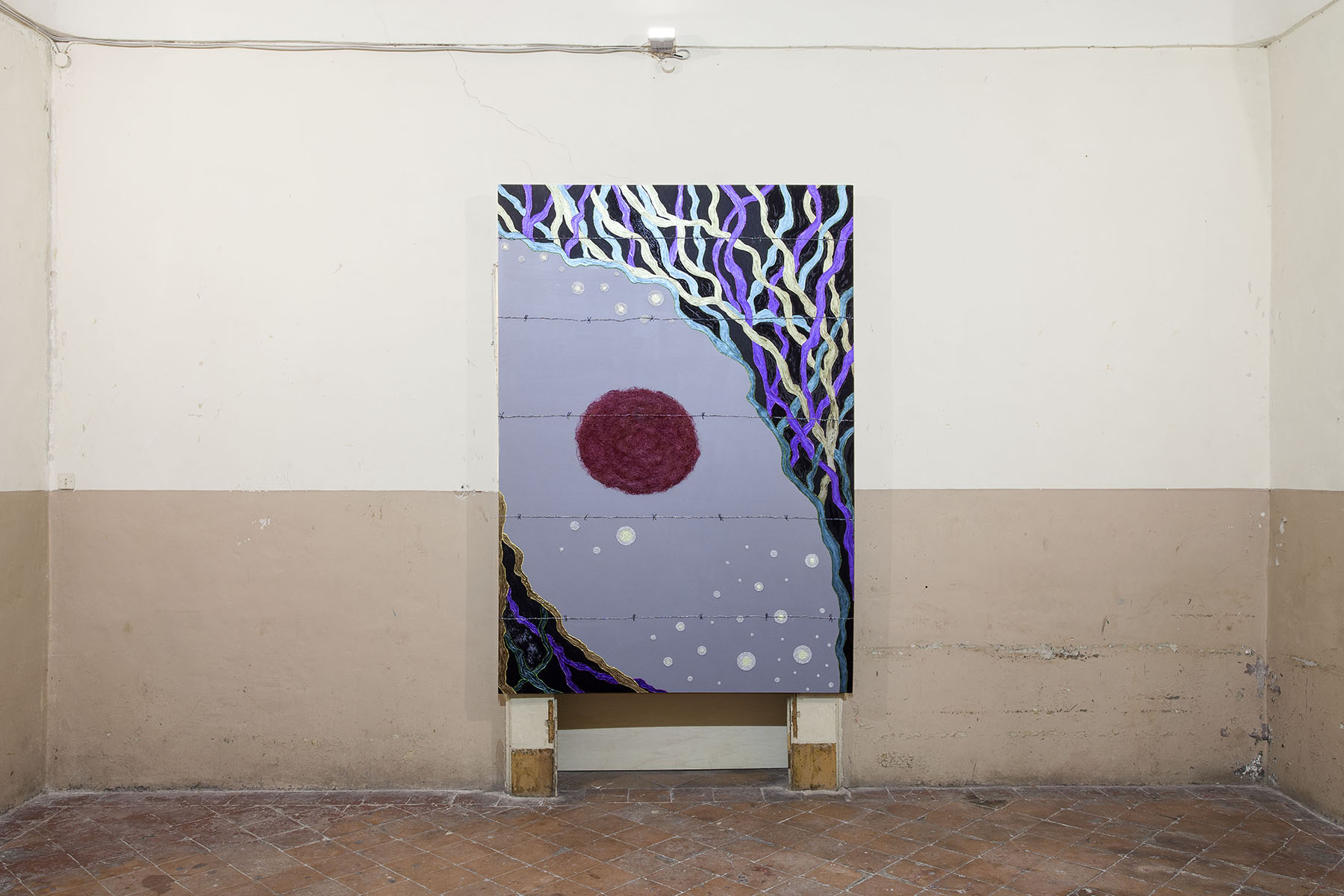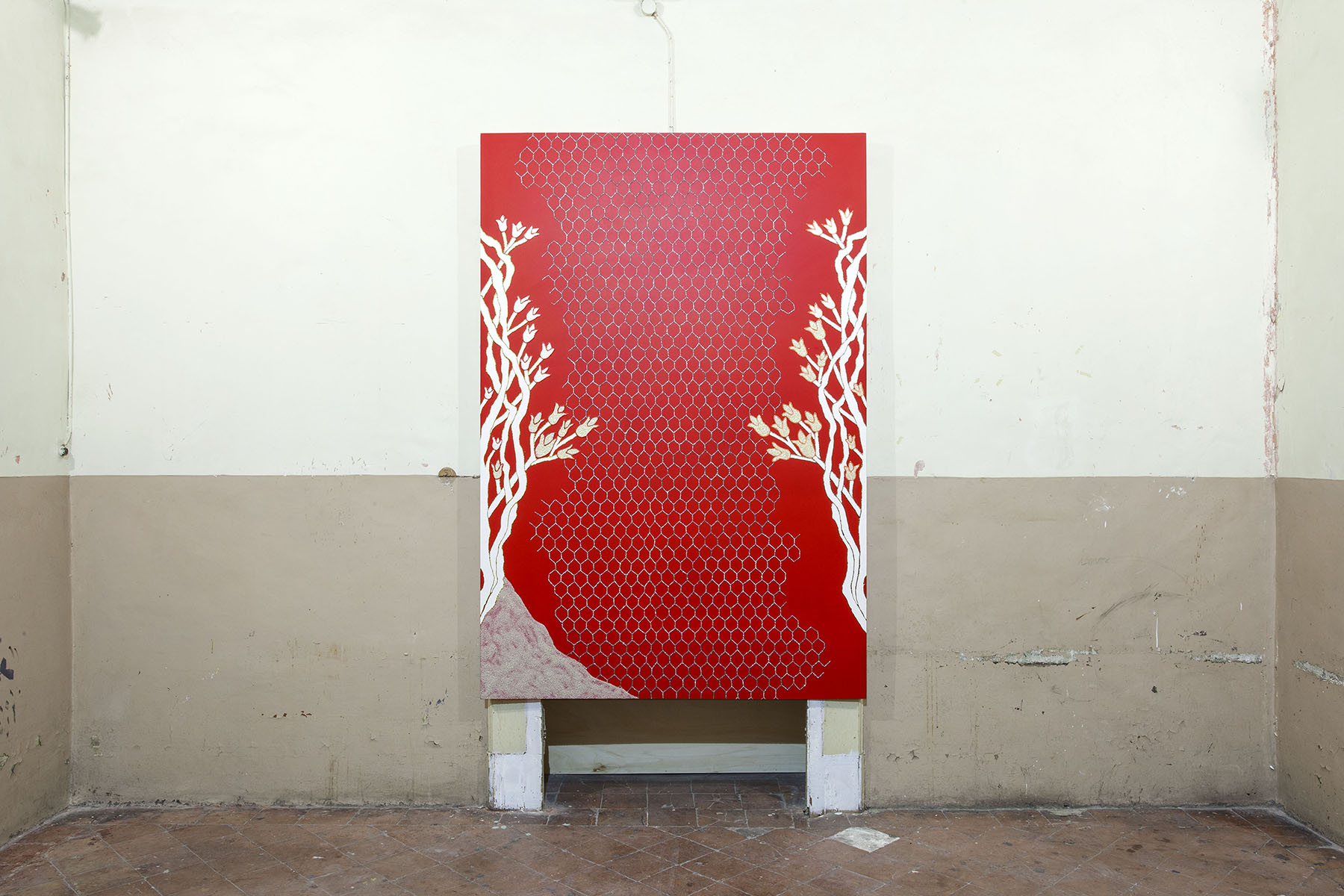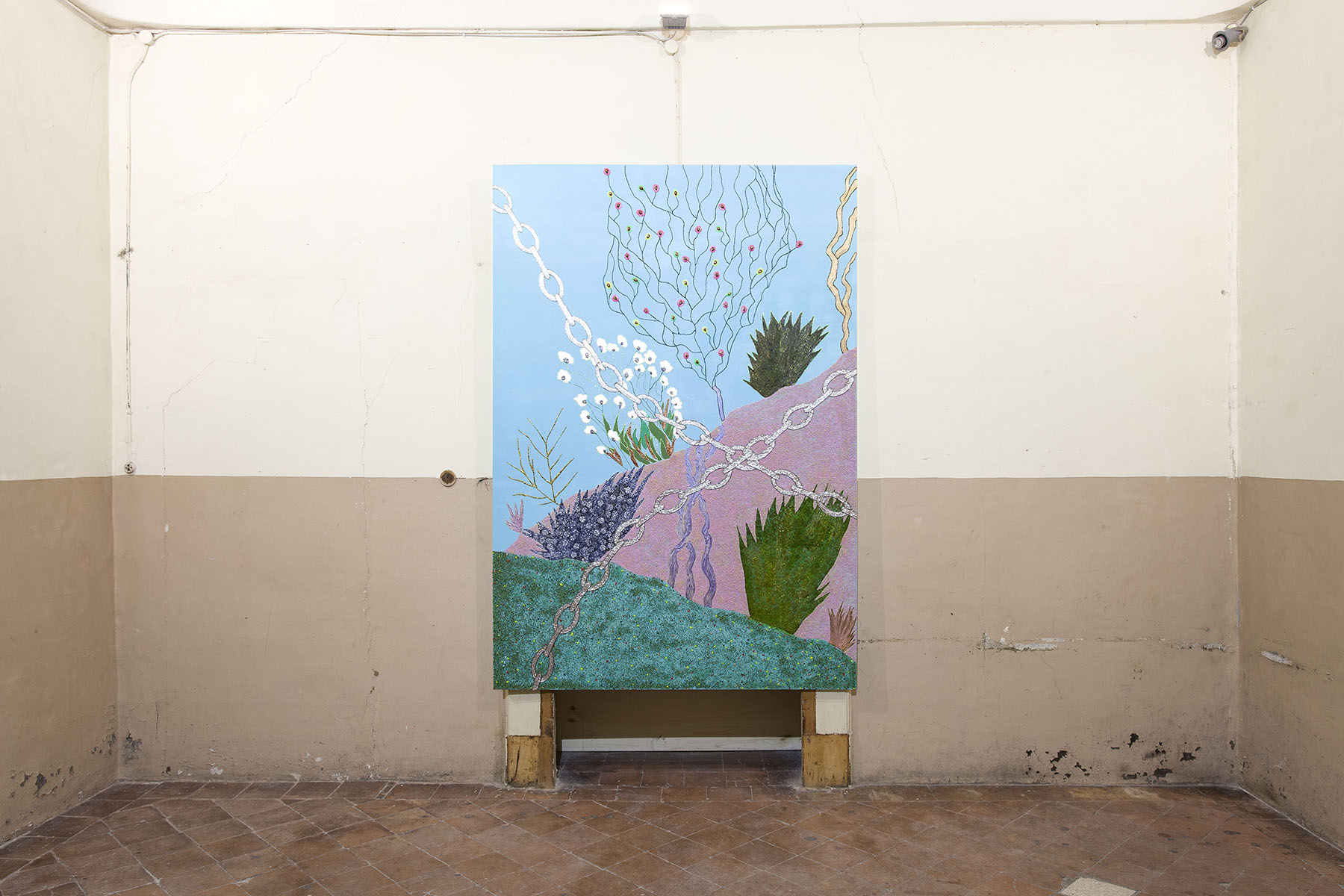11042014 \\ 24052014
Betty Bee’s work can be seen as a process of self-therapy through art, disguise on one side and laying bare her soul on the other. Her existential journey and the social and affective dynamics that have distinguished it, coincide with her artistic journey conducted through performances, videos, painting and photography. If provocation and irrepressible pop-kitsch exuberance tend to characterize her photographic works, videos and performances, her output of paintings takes on a much more intimate character and the story that Bee wishes to recount on this occasion is not of violence and expiation but of change and liberation.
Second Life, the exhibition’s title, is an example of the transformation fixed on canvas by the artist, who through the exhibition of five pictorial works, discovers herself and gives a voice to the emotional developments that have characterized the most recent period of her life. The paintings on show were all produced in 2013, with the exception of a single work dating from 1998, which foreshadowed her more recent output. Indisputable symptoms of the need to protect the artist’s inner life are the two motifs recurrent in all her works: the elements of protection and fluorescent paint. Instruments of defense, such as chains, barbed wire, wire netting and honeycomb mesh attempt to fix a boundary between the viewer and the unveiling of Bee’s soul. This delimitation is necessary to safeguard an innocence preserved with difficulty because it has never been lived. At the same time fluorescent paint is used to make the existence of this other being constantly concealed less visible to the naked eye, being never shown in the physical gesture but only in the work, dominated by a naivety almost dazzling in its purity. So while in her previous works apparently the protection was necessary because of the aesthetic aggression and arrogance of the artist with her disruptive and provocative femininity, here it is made clear that the most dangerous part of her being is the inner aspect, to be strenuously defended and made to glow with light only at night.
Each of the works occupies a room on the first floor of the Foundation, allowing each work to breathe without encroaching on the sensations of the others. The work Crosta, 2013 represents the artist’s world along with the earth, the planets and intelligent thinking beings, whom Bee scrutinizes from above as if she were a huge head capable of looking at everything during the great break of the night, which with sleep takes only time away. Then follows Loneliness, 2013 in which the feeling of distance from others experienced by the artist is accentuated by the presence of the netting and the rock it is set in, a sign of her capacity to remain rational and conscious despite the temptation to get lost in herself. Again, Life, 2013 recovers the optimism and childlike aspect of her painting, joyful and childish, in search of happiness between the vision and the representation of scenes like an animated cartoon. In Couple, 2013, however, the two branches in bloom at the edges of the space of the canvas are the two members of a couple, increasingly distant and unable to experience the feelings that make it possible to follow a single path in life. Untitled, 1998 launches us finally into the fabled romanticism that characterizes Betty Bee’s new output. On the occasion of the exhibition the work has been renamed The Great Beauty because, as the artist states, “it touches on the world but one that leads to nothing, because when there is something beautiful, things finally bloom again”.
The little girl in Betty, grown-up outwardly but never truly inside, can therefore begin to really live and cease hiding behind gestures, impulses and actions, which she finally has the courage to abandon. Betty Bee, as a woman, has finally attained her second life, whose pulsation, this time, will not be contaminated by the viewer’s eye.
Anna Cuomo
All images Courtesy Fondazione Morra Greco, Napoli
© Amedeo Benestante

